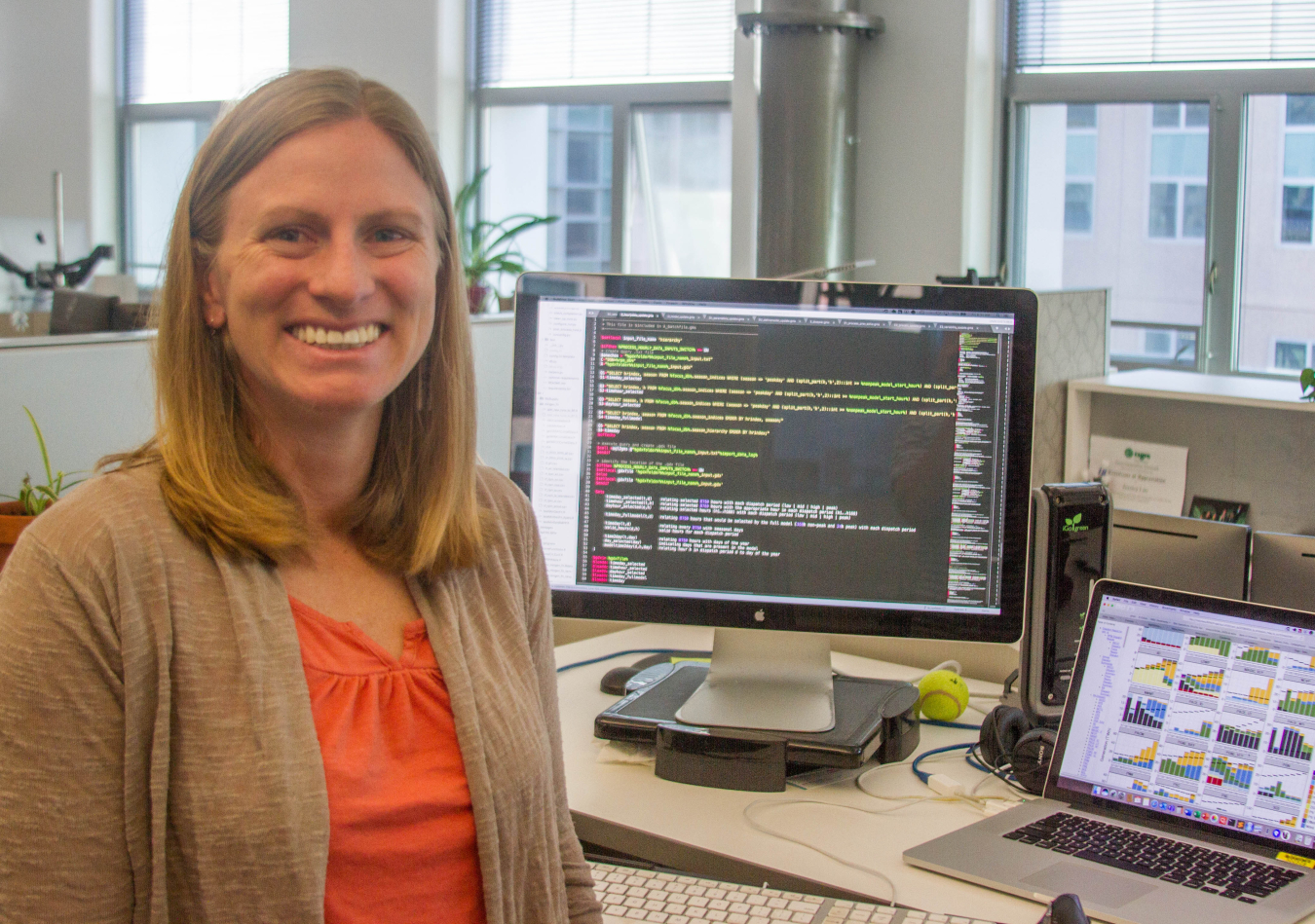Learn why Dr. Brady Cowiestoll loves her job as an engineer in the Strategic Energy Analysis Center at the National Renewable Energy Laboratory.
October 8, 2019
Brady Cowiestoll is an engineer in the Economics and Forecasting group of the Strategic Energy Analysis Center at the National Renewable Energy Laboratory. She joined the lab in May 2015 as a postdoctoral researcher and has been an engineer since 2016. Her work predominantly focuses on potential future challenges around the evolution of the electric power sector, including what types of generation capacity may be expected to expand and how to anticipate needs of the power system. Brady received her Ph.D. and M.S. in Mechanical Engineering from the University of Texas at Austin in 2015 and 2012 respectively. She also has a bachelor’s degree in Physics and Plan II from UT Austin.
What inspired you to work in STEM?
I love to solve puzzles and to explore new things. STEM is perfect for both of those since there’s always something more to explore, investigate and better understand. As a kid, my parents encouraged exploration, and I found that the classes in high school that I was most engaged in were my science and math classes. When I was younger, I enjoyed learning about basic sciences and generally better understanding the world, but I found that, as I started thinking about a career, I was drawn to engineering because of the interaction of people and science. I definitely use my physics background in much of my work, but I enjoy that much of what I do now centers around solving the technological challenges that our society will face in the coming years.
What excites you about your work at the Energy Department?
The current time is a really interesting time in the energy industry since so many things are evolving and changing. I love that my work lets me to explore the challenges that we might face in the future because of those changes. In particular, I am excited to be a part of finding solutions to future challenges to help make the coming transitions easier for everyone and to better understand and prepare for potential changes in the power sector.
How can our country engage more women, girls, and other underrepresented groups in STEM?
It’s important that we continue to showcase and uplift role models for younger women to demonstrate the many different pathways women can take into STEM. We don’t always fit the same molds as men and may have non-typical paths to getting into the field. It’s important to show younger women that they have many options open to them, even if they come to STEM later in life, or after being engaged in other areas.
It is also important to change the cultural stereotypes of what a STEM person “looks” like; we are not all introverts who just want to do experiments in laboratories, but instead have a vibrant range of skills, desires, and personalities.
Do you have tips you'd recommend for someone looking to enter your field of work?
My number one tip is to follow your curiosity and always keep learning. There are so many tools – be it coding, visualization, optimization, basic science – that are constantly evolving and are incredibly useful for modeling and analysis. Learn some of them and use them to keep exploring interesting questions. Energy modeling is a wide field with many different areas that fit together in the power sector. Learn a little bit about all of them to better understand the variety of influences on electricity production and operation.
When you have free time, what are your hobbies?
I play competitive ultimate frisbee. I’ve been playing for 10+ years now and love the combination of competitiveness, comradery, and community found in the sport. Currently I play for Colorado Small Batch, a women’s team from Denver/Boulder. I also enjoy hiking and gardening as slower paced activities.
Learn more about our programs & resources for women and girls in STEM at http://www.energy.gov/women

